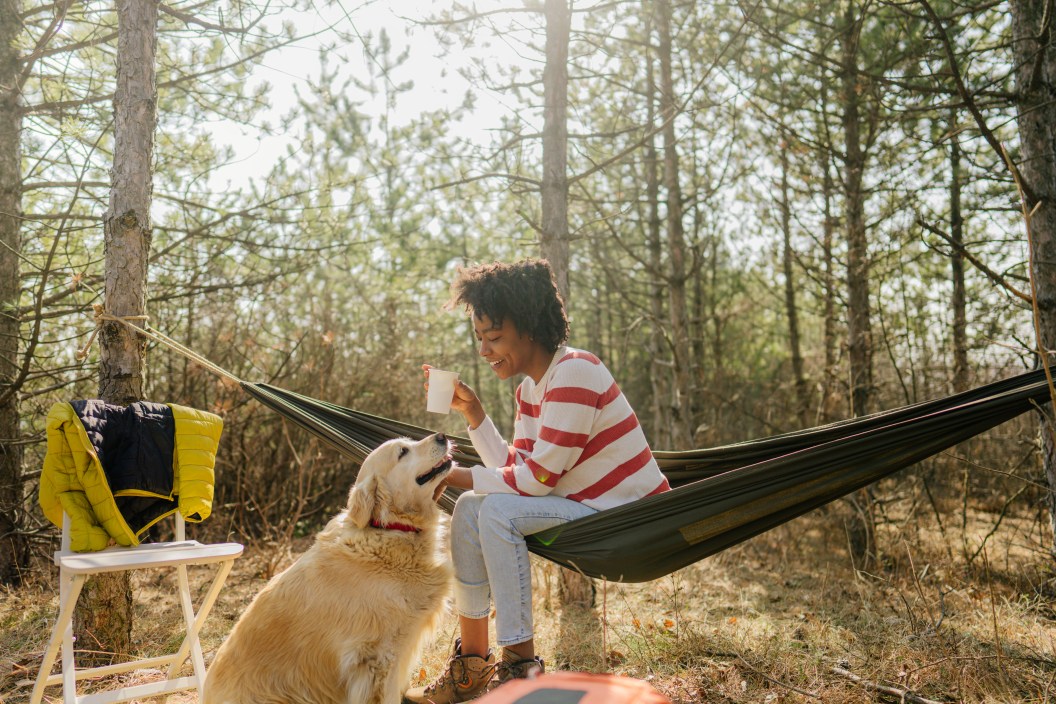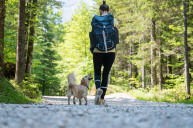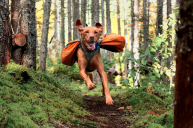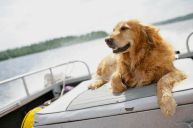Camping with your dog means getting to spend time with your furry best friend while enjoying nature and outdoor adventure—what more could you ask for?
However, while dogs generally enjoy spending time outdoors, there are some considerations before you camp with your dog, especially for first-time doggy campers. After all, a dog might behave very differently in a national park or open BLM land than at your local dog park. Plus, there are a few extra items you should bring to keep them just as cozy and safe in the backcountry as you are.
To ensure that you and Fido are safe and comfortable during an overnight outdoor adventure, follow these 12 tips for camping with dogs.
1. Train First—and Know Your Dog's Limits
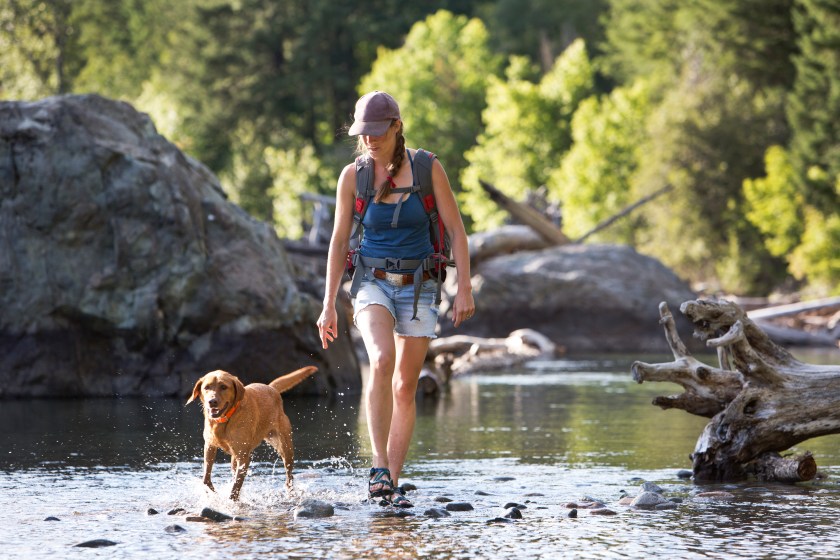
Getty Images, JMichl
Learn from my mistake: Don't overestimate what your dog can handle. Based on my lab-border collie mix's never-ending stamina back home—which includes hours of swimming followed by bike rides followed by walks to the local brewery—I thought covering 12 to 15 miles a day while backpacking would be fine. However, she hit her limits even on days when we were far from meeting my daily mileage goals.
To help a dog prepare for roughing it on a multi-day trip, train them up by going on regular day hikes. Not only will this improve stamina over hilly terrain, it can build up callouses on your dog's paws for rock scrambling—or get them used to wearing hiking booties over long hauls, if you opt to go that route.
More important than anything, however, is listening to your canine companion. This means having flexible plans for your trip, going slower on activities, having patience, and being in tune with your dog's needs. If a dog rests on a hiking trail and won't get up when you do, they probably need more rest (or something is wrong).
2. Prepare for Any Scenario
Unexpected injuries can happen to either you and your dog on outdoor adventures. Whether you're in the front country or the backcountry, you must be prepared for anything—an essential tip for camping with dogs. Consider taking a canine first-aid course like one from Pet Emergency Academy to better understand common injuries and how to handle them.
At a bare minimum, make sure you familiarize yourself with your first-aid kit and how to use everything in it. And, if you're backpacking, pack a rescue harness in case of those unfortunate injuries your dog cannot walk away from.
3. Prevent Fleas and Ticks
If you've ever had a remove a tick from your dog, you know that keeping those tiny terrors at bay is a battle. Flea and tick season used to only be in the spring and summer, but depending on where you live, it can be a year-round concern. If left unprotected, dogs can contract a bunch of nasty health issues like anemia or Lyme disease, so talk to your vet to determine the best tick and flea prevention for your dog.
Regardless of tick prevention medication administered before a trip, make sure your pet first-aid kit is equipped with essential tick removal items such as tweezers—a good item for human first aid kits as well!—and a pooch-friendly topical antiseptic like Chlorhexidine.
4. Don't Discount Dog Sleeping Gear
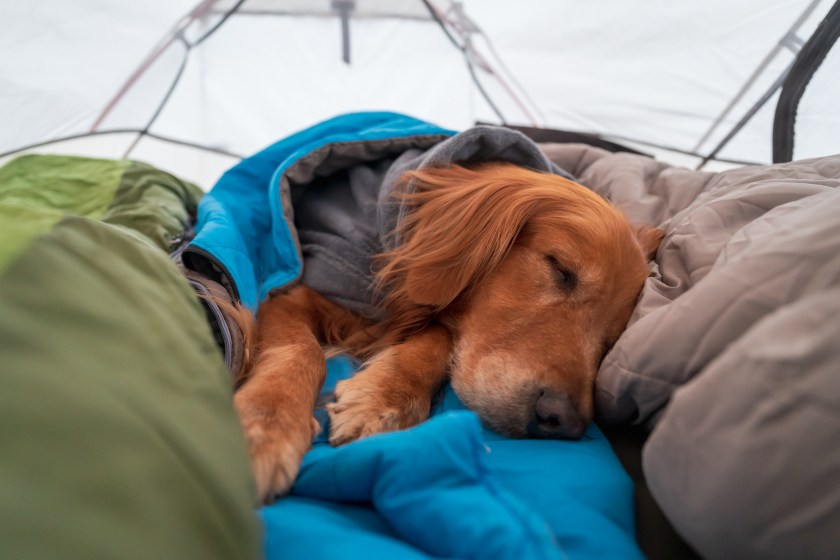
Getty Images, chendongshan
If you're looking at your dog camping gear and wondering which items you can pair down for your camping trips, the sleeping bag and pad might be your first thought. But making sure your dog has a comfortable place to sleep ensures they're ready for whatever adventures you have planned. And, yes, don't forget your dog needs to stay warm, too—even if they have a gorgeous, thick coat like my pup. A sleeping bag can also help your furry friend feel more secure in an unfamiliar environment.
On the other hand, for car camping, you may be tempted to bring along the dog bed you have at home. Don't. Even if the bottom is made from rubber, the top is probably too delicate and won't stand up well to dirt, sticks, pinecones, sap, or a line of ants searching for biscuit crumbs. Stick with a camp-only setup that's built for the rigors of outdoor use.
5. Test Out Gear at Home
This is just as true for dog camping gear as it is for human gear. Getting your pup used to wearing their booties or zipping them into their sleeping bags at home will make them feel comfortable when it's time for the real thing.
With practice, dogs will regard their gear as theirs and (hopefully) be more cooperative when using it in an unfamiliar setting. It also gives you the chance to see if your dog absolutely detests a particular piece of gear while it remains dirt-free (i.e., returnable!) and gives you the time to find another solution.
6. Pack Lots of Fresh Water
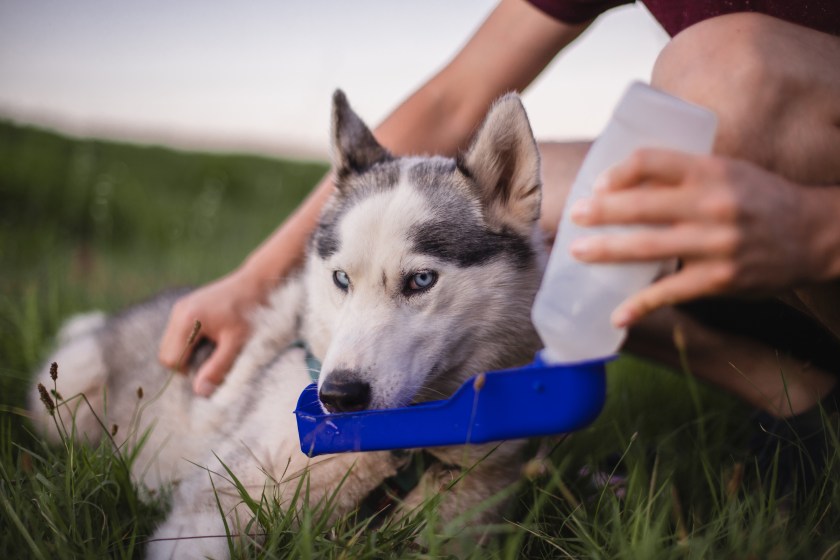
Getty Images, Coppy
Your four-legged friend may drink from slimy puddles and nosh on mystery poop at home, but allowing your dog to drink the mystery water in the backcountry isn't a good idea. If you let them do this, they may contract infections from parasites like giardia, which can be passed to you, by the way.
To be safe, bring plenty of fresh water and a collapsible bowl and encourage your dog to drink that instead.
6. Bring Dog Toys and Treats
Even after a long day of hiking, dogs who need constant stimulation might find themselves bored at camp when all of the humans have resorted to kicking their feet up for a pre-sunset beer or two. An unexpected tip for camping with dogs: Bring along their favorite toys, bones, or treats to save them from boredom and you from guilt.
Just make sure that all food items (including bones) are properly stored from wildlife when not in use. In fact, plan to have all dog food protected from wildlife. When backpacking, make sure that your pup's kibble will fit into your bear canister if you're in bear country. In national or state parks, where food storage bins are present, make sure that all dog food and treats—including KONG-styled treat toys, which may carry food odor—are properly stashed.
8. Don't Forget the Collar and Leash
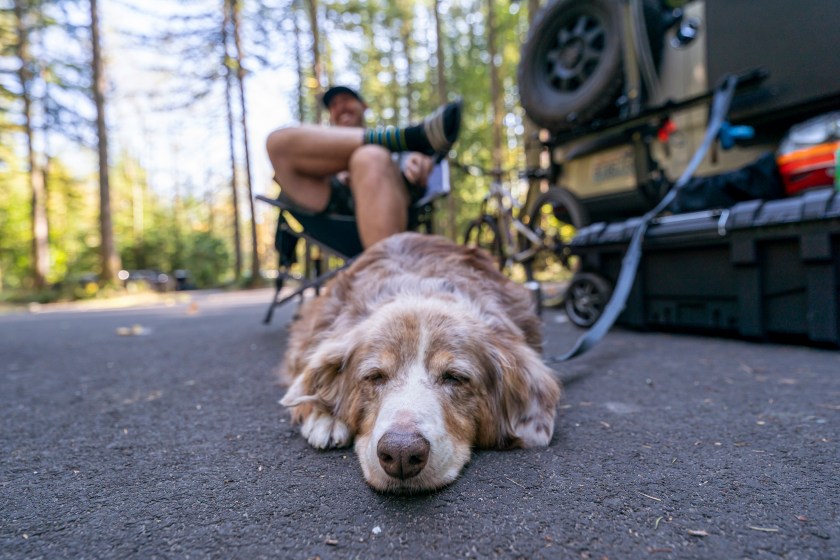
Getty Images, Fly View Productions
Because you're bringing your dog out into the unknown with an abundance of stimulus, it's essential that your dog's collar has an ID tag (and your dog is wearing it), as off-leash and leashed dogs alike may make a run for it if spooked or attracted by any number of small wildlife. Don't rely on microchips, because these require scanning at a vet or animal shelter; not everyone in the wilderness will take on the responsibility of transporting a dog (sometimes for hours) to the nearest facility where a scan may happen.
While in campgrounds, it's smart (and often required) to tether your dog to prevent them from chasing after critters or ending up wandering into the road.
9. Research the Local Vets
Another of those boring-but-important tips for camping with dogs: You should know where the closest vet is located to your campground and save their number to your phone. At the very least, know the closest town that has a vet and how to get there. Often, phone service will be spotty or nonexistent at campgrounds, and in the heat of a coyote-bit-my-dog panic, you may end up costing precious time trying to source this information. While we're at it, go ahead and add the phone number for a pet poison control center to your phone...just in case.
10. Make Sure Camp Is Pet-Friendly
This seems like a no-brainer but can be easily overlooked. Not every campground will allow dogs to tag along. Even within some national parks, like Yosemite, you'll find dog-friendly campsites and ones that aren't.
On this note, be sure that you are being a respectful and responsible dog owner so that places can remain dog-friendly. Be sure to clean up your dog's poop, obey leash laws, and maintain control over your pup at all times.
11. Consider Your Dog's Temperament
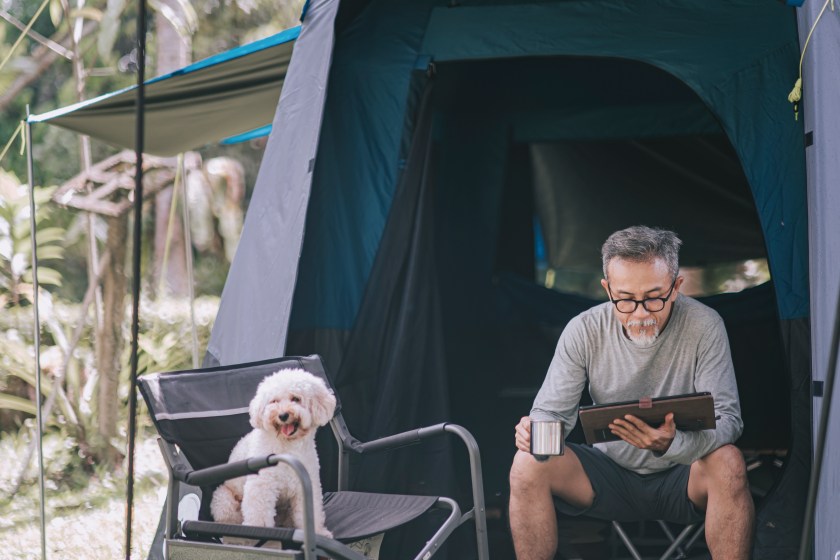
Getty Images, Edwin Tan
As much as you may enjoy having your pup along for the adventure, it's important to consider whether they'll enjoy it, too. For example, if your dog barks a lot or is afraid of strangers, they may be safer and happier left at home.
If your dog is particularly anxious or alert to noises, you may want to talk to your vet about ways to calm them down when entering new environments. In the outdoors, lots of noises will be unfamiliar, whether that be from the Chads throwing axes three campsites away or coyotes scampering near your backcountry site!
12. Start Small and Stay Close to Home
If you aren't very experienced in bringing your dog into the wilderness, start small. Choose campsites that are close to home and familiar to you. Opt for an overnight backpacking trail that only goes three to five miles. Over time, you and your pup will form a routine and comfort in the outdoors—just like you did when you first started camping.
READ MORE: The Best Camping Gear for Dogs, Whether Car Camping or Backpacking
